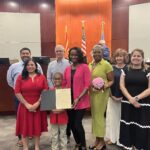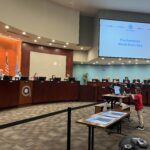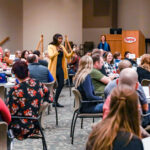When you think of agility, what are a few words that come to mind?
Are they words that typically correspond with athletic prowess—flexibility, quickness, dexterity? What about expanding our ideas of agility into other areas of our lives? Could it be incorporated and applied into our organizational skills and how we analyze various concepts?
It can and it does.
Agility doesn’t just involve objects but involves ourselves as well, intersecting in our business, personal, mental, emotional, and creatives sides. It involves observing. Somehow, as we get older, we find ourselves settling into a type of rigidity; we no longer ask the questions we used to ask as children:
How else can this be used? What can my imagination turn this into? Who should I become today? Which role can I play? How far can I go?

Unfortunately, as adults we often ignore this expansive mindset and begin to unknowingly train children out of it. We often start by having them pick one profession to commit to for the rest of their lives.
We ask them, “What do you want to be when you grow up?” The odd thing is Shawn, my four-year-old son, throughout the course of one day has claimed at least five or six professions. In the morning he’s a wilderness explorer, a scientist, and a botanist. By lunch he has already been a geologist and an engineer. Finally, he ends the day being a dancer and a baker—he makes a mean fudge brownie.
His creative imagination forces him to act out his functional agility in all of the areas of his life with objects and within his own identity. He doesn’t have to be a profession; he gets to be himself! Wouldn’t it be nice to simply be ourselves, to no longer be afraid to flow in our natural creativity?
Observation is key.
Having the ability to see life from a different discipline, position, or profession widens the possibilities to what we expose ourselves to. Shawn and I can go into the same area, like our local river trail, but as a different discipline. This will cause us to interact with the environment in a different way.
Being a botanist, a painter, a geologist, a bird watcher, or even an entomologist (one who studies insects), shifts attention to different stimuli in the same environment. And remember, to observe means “to pay attention.” I am guiding Shawn to pay attention to various things in the same space. I practiced this with him in his childhood, so when he arrives in his profession(s) as an adult—when the stakes are much higher—he’ll be advanced in observing things many others don’t notice because of his ability to shift perspective and be agile with his observations.
But don’t stop there. Ask. Let’s ask our students and team members, “What problem(s) do you want to solve with your life?”
This helps them focus on being a solution and not an occupation. Oftentimes, our identity becomes wrapped in our occupation(s) as opposed to viewing our occupations as a vehicle that helps lead to solutions. You can take it to a deeper character level and ask, “Who do you want to be?” This has them focus on character development as well.
How do we increase our ability to discover and develop the possibilities that we have yet to know even exist? Through imagination. Their imagination should be involved in the development of their future identities. You can’t be what you can’t see. And we first see everything in our mind’s eye–our imagination.
These are things we can implement in ourselves in order to remain mentally and creatively agile but also being able to show those around us the power of imagination in motion.
Why not take a moment today and simply imagine and ask yourself some of the questions stated above that we rarely ask ourselves as adults:
How else can this be used? What can my imagination turn this into? Who should I become today? Which role can I play? How far can I go?
Don’t worry. There are no right or wrong answers. There is only the limitless freedom to imagine and be you; in whichever way you see fit.
Genein Letford, M.Ed





